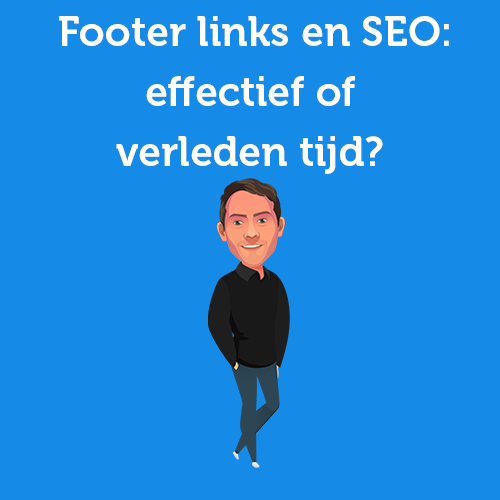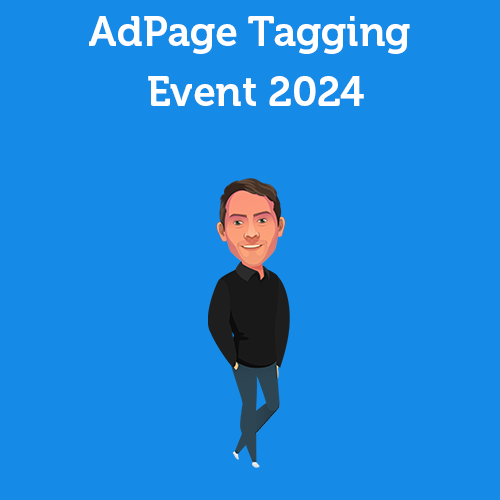Menu
Table of contents
So we can pretty much say what often goes wrong in terms of technical SEO. And 16 of those common mistakes we've listed for you....
... so you don't have to make them.
In no particular order:.
Error 1: Website set to noindex
When a website or page is on noindex, you're basically telling Google, "Hey buddy, you can skip this and don't have to include it in your indexing.
Of course, that's extremely useful when you're building a new website or on a test domain or on your thank you page, because you don't want those to show up in Google.
But you definitely don't want this with a website or page you want to use to bring in more visitors and customers. They do need to rank in Google. And preferably as high as possible.
Error 2: Disallow on the entire website in the robots.txt
The disallow is very similar to the noindex, but works slightly differently. With the noindex, you tell Google, "you can't index this. With the disallow, you tell Google, "you may not crawl this.
You want a disallow, for example, on a payment environment or an online learning environment. After all, you don't want Google to get there. You want to keep that part of your website hidden from Google.
But you don't want that with the rest of your website, because Google may crawl it. Unfortunately, it is still common for the entire website to be set to disallow and therefore not crawled.
Error 3: No redirects or set up incorrectly
One of the biggest SEO mistakes (especially in an SEO migration) is not setting redirects or setting them incorrectly.
If you don't redirect a URL when you modify it, you lose all the value that that particular URL has built up. Or in other words, say goodbye to your high Google rankings and therefore goodbye to your visitors and leads.
Error 4: Errors in the htaccess (http, https, www and non-www redirect)
This error can come in two degrees, with one being worse than the other.
- Your website is not or incorrectly redirected from http to https or not from non-www to www
- Your website is not redirected from http to https and not redirected from non-www to www
In the first case, it appears to Google that you have two websites. For example, https://jouwwebsitenaam.nl and http://jouwwebsitenaam.nl. In the second case, two more are added: https://www.jouwwebsitenaam.nl and http://www.jouwwebsitenaam.nl.
This is incredibly bad for your SEO for two reasons:
- Google sees duplicate content.
- Google no longer knows which URL is most important, and so you can lose some of your value. In other words, this is where mistake 3 comes in again: no set redirect.
Mistake 5: Having a slow website
Everyone (yes, really everyone) finds a slow website annoying. You think so, but so does your ideal client. That should really be enough reason to make sure your website is fast.
Should that not be enough for you, by now Google is also penalizing you if your website has a long load time.
Mistake 6: SEO-unfriendly URLs
I'm going to continue for a moment with putting your visitor first instead of Google. Which URL do you (or your ideal client) trust more?
- https://www.tshirtsjop.nl/heren/t-shirt/korte-mouw/
- https://www.tshirtsjop.nl/herenSHIRT5-kort_blauw?/metkortemouwen4/
The answer, of course, is URL 1 :).
Especially when it comes to web shops, we see this go a lot of times. Filters, color combinations and other values are often included in the URL, making it look messy and unreliable.
Google doesn't like these kinds of URLs either. The search engine prefers to see them as short and clean as possible. Without characters and other frills.
Error 7: No or an incorrectly set canonical
The rel=canonical is the solution to duplicate content. With it, you can indicate to Google that content is similar and you can use it to tell which pages should be shown in the search engine and which should be hidden.
For example, a good example is the page /shirts/ within a web shop. You want that page to be found on the word "shirts". If you sell 1000 kinds of shirts, you will get multiple pages full of shirts (per page you often show only 24).
You then get /shirts/2/ or /shirts/page-2/, for example. These pages should not compete with the /shirts/ page and so you set a canonical on the /shirts/2/ page to the /shirts/ page.
Mistake 8: Missing meta title and description
If you have a good WordPress website you may be wondering how this can happen. Yet this can happen even within WordPress, especially if it is a custom built theme.
Developers sometimes forget to include the meta title and meta description, which means your pages don't have a meta title and meta description or you can't manually add them yourself.
By the way, this does not only apply to WordPress, but this can also be done within another CMS.
Error 9: Missing sitemap
You can think of the site map (or table of contents) of your website. It allows you to communicate to Google which page is where and all the URLs your website contains.
Thus, with the sitemap, Google does not have to search for itself and therefore cannot make mistakes by skipping or forgetting pages.
Pro tip: always offer the sitemap in Google Search Console!
Error 10: Missing robots.txt
If you think of your website's sitemap as your website's floor plan, then the robots.txt is your website's manual. That's because the robots.txt allows you to tell Google, "you can't crawl this page.
And of course you do that with the disallow we explained in at error two.
Error 11: Having scripts in the wrong place in the code
You also use Google Analytics, right? Did you manually add the script yourself, do this through a plugin or did you have your developer do that?
In fact, it is very important that the script is in the right place. No, not after the conclusion of the body, but preferably as high as possible in the head.
Mistake 12: Incorrect implementation of structured data
Structured data is infusing a piece of technology into a piece of content to make it more understandable to Google. In other words, structured data provides context for the search engines.
Google has been doing an awful lot lately when it comes to structured data. Features are added, requirements are modified, certain things are dropped or elements are added.
Because of this, it is common to find an error in the structured data used on the website.
Mistake 13: No clear (URL) structure within the website
It makes sense that your contact page is on /contact/ and not on /contact/blog/ right? It also makes sense for the Tommy Hilfiger polo shirt you sell to be under the heading polos and for that to be included in the URL.
This is also called the URL structure of your website. For Google, this structure is very important. This is because it allows you to cluster and categorize content.
You also want your visitors to see only polo shirts when he is on the /polo/ page, right? This is not where you want to show pants. The same goes for Google. It also wants the URL structure to be correct, logical and coherent.
Again, a URL like /pants/tommy-hilfiger-polo/ is strange to your visitor. And so is for Google.
Mistake 14: Having broken internal and external links
This error is actually an extension of having wrong redirects. A redirect can be to the wrong page, of course, but it can also be to a non-existent or deleted page.
In either case, your link is broken. This means that the value being forwarded is not getting to the right place and when Google follows the link, it ends up at a dead end.
This can be either internal or external!
Having one broken link on your website really won't hurt 500.
Error 15: Expired SSL certificate
The lack of an SSL certificate is fortunately not so common anymore. So I did not mention them in this list for that reason.
Which I want to mention for a moment is an expired SSL certificate. Actually this amounts to the same thing, because if your SSL certificate has expired then you don't have a valid SSL cert :).
This often occurs because you or the hosting party did not renew the SSL certificate. So always check.
Error 16: Incorrect use of tags and categories
You still encounter them often enough: websites that create a tag and category for literally everything. This makes the website (and thus the internal link structure) a big gray mush. This is very unclear to visitors and to Google.
The website then has lots of pages with little content, and the content that is there appears in lots of places. This is also called thin content. Pages with little valuable information. Especially if there are only one or two blogs linked to this tag or category.
This article was written October 19, 2020 and updated July 20, 2023.
What are the most common technical SEO mistakes?
The most common technical SEO errors are: website on noindex, disallow on the entire website, no or incorrectly set redirects, errors in htaccess and slow website.
What is the difference between "noindex" and "disallow" in technical SEO?
"Noindex" means that the page should not be included in search engine indexes. "Disallow," on the other hand, ensures that search engines should not crawl or index the page.
Why are properly set redirects important for SEO?
Properly set up redirects ensure that the value and ranking of a URL are maintained when it is modified. Without redirects, the page loses its value and position in search results.
How can having a slow website negatively affect SEO?
A slow website leads to a poor user experience and increases the bounce rate. This can lead to lower rankings in search results because search engines prioritize websites with better user experience.
Why is a clear URL structure important for SEO?
A clear URL structure helps search engines understand and categorize content. It makes the website more user-friendly for visitors and helps Google display relevant pages in search results.











Written by: Daniel Kuipers
Daniel is the founder of Online Marketing Agency. He constantly scours the Internet for the latest gadgets and tactics and blogs about them in understandable language. Well, sometimes.